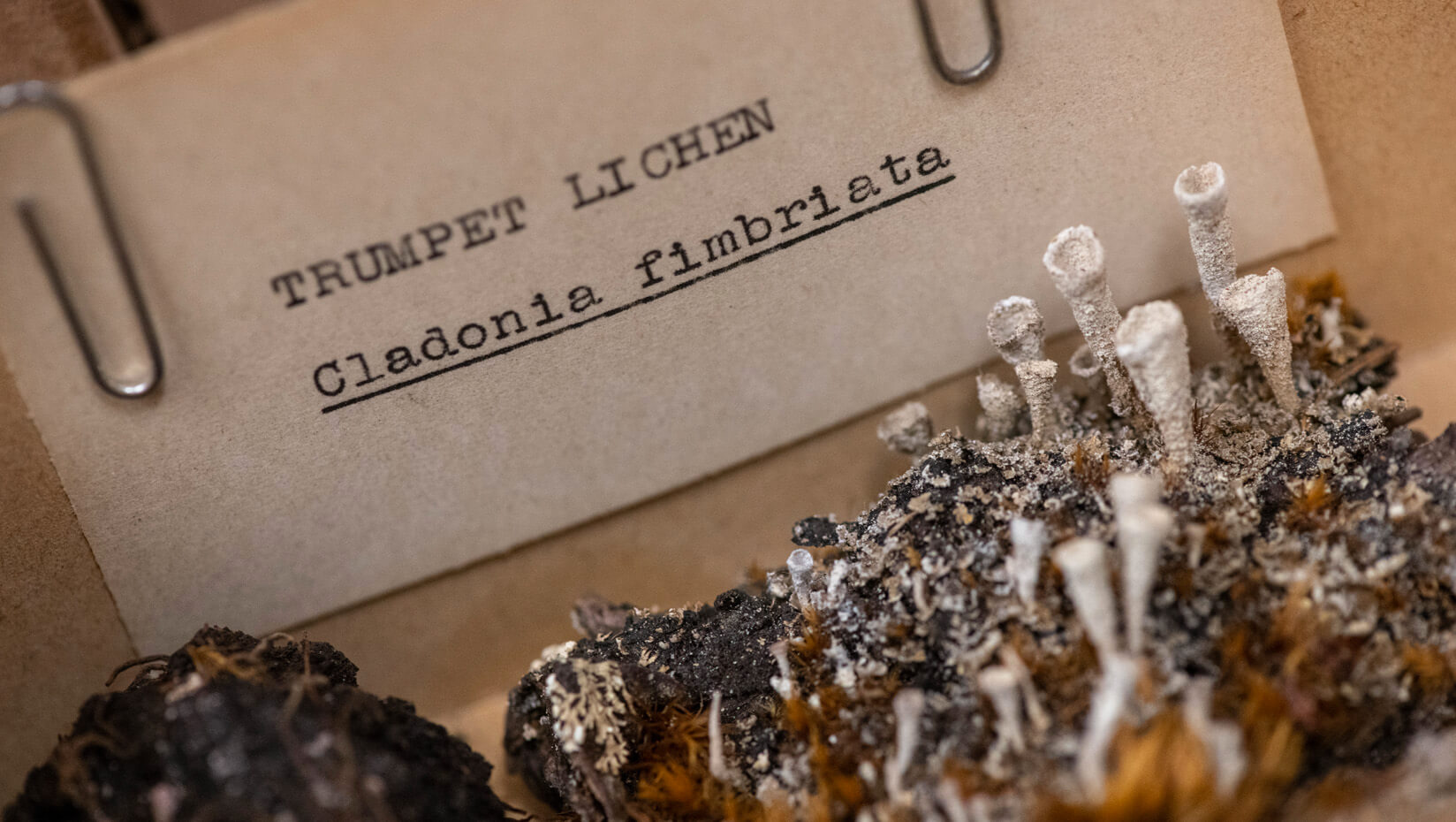
Retired UMFK professor Steven Selva donates lichens to UMaine Herbarium
Transcript
Chris Campbell:
We’re in the University of Maine Herbarium, which has been around at least as long as the university. We have collections that predate the formation of the University of Maine here. In this facility that houses five different collections, vascular plants, the higher plants — trees and flowers — algae, fungi, mosses and the collection that we’re focusing on today.
We’re the beneficiaries of an amazing collection of lichens from northern Maine that include lichens that we have not got well-represented in our collection.
Steven Selva:
We brought a collection of lichens that are all from Maine — Maine lichens that we had in our collection— and there’s roughly 2,000.
A lichen as a group, they are classified with the fungi. All fungi need carbon, like all livings things do, and they get it from what they’re growing on.
James Hinds:
I would say it’s magnificent because he’s a world-class collector of stubble lichens and our collection was extremely weak stubble lichens. He’s got better coverage of the crust and we’ve got better coverage of macro lichens and when you put them together, we’ve got a really excellent collection for all groups.
This has become the go-to place for anybody wanting to know where lichens are in the country and which species are where.
Chris Campbell:
We’re heavily dependent on the natural world, what’s out there. We may think we can do everything on our own, but we’re heavily dependent on plants, trees, all sorts of aquatic organisms, and the only way you know about them is to study them. The Herbarium is a storage facility that enhances the understanding of this natural world and its study.
